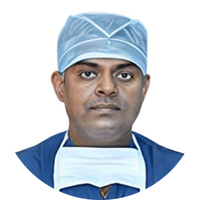What is a Restless leg syndrome?
Restless legs syndrome is a condition associated with the nervous system and is characterised by a strong urge to move the legs continuously. It also causes unpleasant crawling or creeping sensations in the thighs, calves and feet and, rarely, in the face, arms and chest, which typically worsen in the evening or at night.
What are its main signs and symptoms?
The symptoms are unpleasant, can be mild to moderate and may be seen rarely or daily. They include:
- Painful cramping, itching, creeping, crawling, tingling, burning or throbbing sensations in the legs (especially the calves).
- Feeling as if the blood vessels in the legs are filled with fizzy water.
- Sitting for long periods is difficult.
- Periodic limb movements in sleep (PLMS) characterised by brief, repetitive, uncontrollable jerking or twitching at night while sleeping, occurring every 20 to 40 seconds.
- Involuntary leg movements even when awake and resting.
What are the main causes?
The main cause of this condition is yet unidentified and is thought to be hereditary and associated with certain genes. Some of the associated causes could be:
- Decreased level of dopamine, which is a neurotransmitter, required for controlled muscle activity and movement.
- Underlying health conditions, such as iron deficiency anaemia, chronic kidney disease, diabetes or pregnancy.
- Triggers which include certain medications, smoking, caffeine, alcohol, obesity, stress and lack of exercise.
How is it diagnosed and treated?
A complete assessment is done after taking a detailed history of the symptoms, keeping in mind their intensity, the time of their appearance, how they are relieved, sleep disturbance due to unpleasant and stressful symptoms among others. A thorough physical examination is then performed, followed by:
- Blood test to rule out anaemia, kidney problems and diabetes.
- Sleep test which includes an immobilisation test to monitor any involuntary movements while you are lying on a bed without moving your body parts.
- Polysomnography to monitor breathing rate, brain waves and heartbeat while sleeping.
Management of restless legs syndrome includes:
- Mild cases can be managed with lifestyle modifications which include:
- Avoiding the above-mentioned triggers.
- Good sleep habits.
- Exercising regularly.
- Treatment during an episode includes:
- Massaging the legs, applying a hot or cold compress or taking a hot bath.
- Engaging in activities that distract the mind, such as reading.
- Performing relaxing or stretching exercises.
- Treatment with medications includes the use of:
- Dopamine agonists, which include ropinirole, pramipexole or rotigotine skin patch.
- Medications to relieve pain include codeine, gabapentin and pregabalin.
- Medications like temazepam and loprazolam are used to resolve sleep-related issues.
- If this condition is due to iron deficiency, it can be resolved by iron supplementation, and if due to pregnancy, it resolves on its own.

 Doctors for Restless Legs Syndrome
Doctors for Restless Legs Syndrome  OTC Medicines for Restless Legs Syndrome
OTC Medicines for Restless Legs Syndrome



















